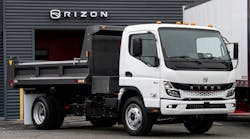Think back to high school and some of your earliest physics lessons. Remember Sir Isaac Newton first law of motion? If not, let me refresh your memory. Newton’s first law of motion says: inertia is the resistance an object has to change its state of motion. You may remember it better as: an object at rest stays at rest and an object in motion stays in motion unless acted upon by another force.
I suppose you’re wondering what this has to do with trucking and fuel efficiency? I think it explains a lot about technology adoption rates. It always seems easier to do what we’ve always done — the object at rest portion of inertia. Some fleets likely think that 5.9 mpg — what the average fleet is getting today — is good. They’re getting freight hauled, their drivers are happy and they are making money. So why change?
Then there are those early adopters of technology — the guys who are the first to test new things in their operation. They represent the objects in motion side of Newton’s first law of motion. They are already making changes so are willing to keep making even more. They like being in motion.
The other part of the inertia equation is the “acted upon by another force.” One of the things that got many fleets to move from the object at rest side was the high fuel prices of the last several years. And once they got moving, they stayed moving.
Today we aren’t feeling the pinch of high fuel prices so that is not a compelling outside force that would cause the “resting” fleets to get in motion.
I sure would like to know what it will take to get those fleets who are satisfied with the way things are, who think 5.9 mpg is good enough, to start looking at some of the 68 technologies we’ve identified as having real fuel efficiency benefits. Heck, some of them — like optimizing engine parameters — don’t even cost anything.
Inertia: if you’re on the objects in motion side, keep doing what you’re doing. If you’re the object at rest, check out www.truckingefficiency.org or give me a call so we can figure out what outside force can be brought to bear to get you moving.
For the trucking industry to really be efficient, everyone needs to be in motion.


